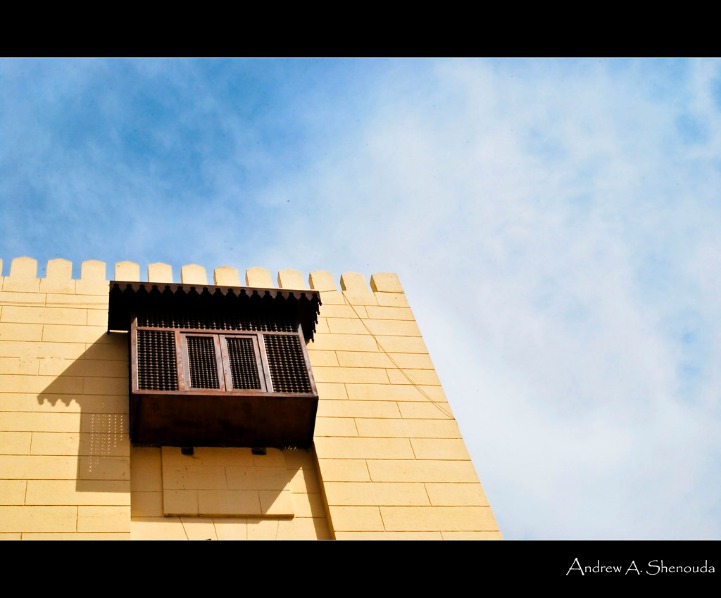Historical Overview of Egyptian Architecture
Egyptian architecture is one of the most remarkable and enduring legacies of ancient civilization, showcasing a rich history that spans thousands of years. From the majestic pyramids and grand temples to intricate tombs and monumental sculptures, Egyptian architecture reflects the society’s religious beliefs, technological advancements, and cultural achievements. Over millennia, these structures have evolved, yet they continue to inspire awe and admiration for their timeless design and craftsmanship.
Ancient Egyptian Architectural Evolution
Ancient Egyptian architecture is renowned for its grandeur, precision, and symbolic significance, reflecting the civilization’s religious beliefs, social hierarchy, and technological advancements. The evolution of Egyptian architecture spans millennia, showcasing a progression from simple mud-brick structures to elaborate stone temples and monumental pyramids.
In the early Dynastic Period, structures were primarily composed of sun-dried mud bricks used for tombs and small temples. During the Old Kingdom, the architectural focus shifted towards monumental stone constructions, most famously exemplified by the Great Pyramids of Giza and the Sphinx, which symbolized the pharaohs’ divine power and their journey to the afterlife. The Middle Kingdom saw refinements in architectural techniques, with the development of more sophisticated mortuary temples and the use of rock-cut tombs in the cliffs of the Valley of the Kings. The New Kingdom era introduced grandiose temple complexes such as Karnak and Luxor, emphasizing elaborate hypostyle halls, massive columns, and intricate hieroglyphic decorations that conveyed religious texts and royal propaganda.
- Early Dynastic Period: Simple mud-brick structures and mastabas used for tombs.
- Old Kingdom: Rise of massive stone pyramids and the Sphinx; focus on funerary architecture.
- Middle Kingdom: Development of rock-cut tombs and refurbished mortuary temples.
- New Kingdom: Construction of large temple complexes with grand hypostyle halls and detailed ornamentation.
- Nubian and later periods: Adoption of new styles and materials, integrating local influences into architectural forms.
Ptolemaic and Roman Influences
The architecture of Egypt reflects a rich history that spans thousands of years, incorporating influences from various civilizations that occupied the region. From the monumental structures of ancient Egypt to the adaptations made during the Ptolemaic and Roman periods, Egyptian architecture demonstrates a unique blend of indigenous tradition and external influence.
During the Ptolemaic period (323-30 BCE), Egyptian architecture saw significant Hellenistic influence as Greek rulers established their dominance. This era marked the construction of grand temples that combined traditional Egyptian motifs with Greek styles, characterized by elaborate facades, use of columns, and incorporation of Greek artistic elements. Notable examples include the Library of Alexandria and various temple complexes that feature Greek architectural orders blended with Egyptian symbolism.
The Roman occupation (30 BCE – 4th century CE) further transformed Egyptian architecture, introducing Roman engineering techniques and urban planning concepts. Roman architecture in Egypt is marked by the development of large-scale public buildings, aqueducts, and necropolises. The use of concrete, arches, and vaults became widespread, enabling the construction of expansive structures that could accommodate larger public gatherings and administrative functions. Notable Roman influence can be seen in structures like the city of Alexandria, where Roman baths, theaters, and aqueduct systems were constructed.
- Integration of Greek architectural elements such as columns and decorative motifs during the Ptolemaic period.
- The adaptation of Roman engineering innovations, including arches and concrete, during the Roman period.
- Development of large public and civic buildings reflecting the influence of Greco-Roman urban planning.
- Continued use of traditional Egyptian symbolism and monumental architecture alongside new influences.
Architectural Features of Ancient Egyptian Structures
The architecture of ancient Egypt is renowned for its grandeur, innovation, and timeless elegance. Distinctive features such as massive stone columns, intricate hieroglyphic carvings, and grand temples reflect the civilization’s spiritual beliefs and societal organization. These structures exemplify sophisticated engineering techniques and a deep emphasis on durability, ensuring their legacy endures thousands of years.
Use of Stone and Masonry Techniques
The architecture of ancient Egypt is renowned for its grandeur, durability, and innovative construction techniques, reflecting the civilization’s religious beliefs and social hierarchy. Central to their architectural achievements is the extensive use of stone, which provided both structural stability and aesthetic majesty. Limestone, sandstone, and granite were frequently employed materials, sourced locally or quarried from distant regions to accommodate massive construction projects such as temples, tombs, and statues.
Masonry techniques in ancient Egyptian architecture involved precise cutting and fitting of stones to create stable and enduring structures. Skilled artisans used copper tools to shape the stones, and mortise-and-tenon joints, along with large monolithic blocks, contributed to the rigidity and longevity of their edifices. The mortared masonry often involved the careful placement of stones with smooth, dressed surfaces, ensuring tight joints and a unified appearance. Additionally, corbeling and arching techniques were utilized in some architectural elements to distribute weight efficiently.
The construction of monumental structures like the pyramids showcases the Egyptians’ mastery of stone masonry, with each block meticulously positioned to maintain alignment and stability. The approach combined both functional engineering and artistic craftsmanship, culminating in enduring symbols of their spiritual and political authority that have stood the test of time for millennia.
Symbolic and Religious Elements
The architecture of ancient Egypt is renowned for its monumental structures and intricate symbolism, reflecting their religious beliefs and societal hierarchy. These structures served not only as tombs and temples but also as enduring symbols of divine power and spiritual concepts.
- Pylons and Hypostyle Halls: Large gateways called pylons marked the entrance to temples, symbolizing the transition from the earthly realm to the divine. Inside, hypostyle halls with towering columns conveyed the power of the gods and reinforced the temple’s sacred atmosphere.
- Obelisks: Tall, tapering stone monuments with a pointed top, representing the rays of the sun god Ra, symbolizing divine illumination and eternal life.
- Mortuary Temples and Tombs: Structures like the Valley of the Kings and pyramids were designed with symbolic alignments and features to ensure protection and passage into the afterlife, emphasizing the Egyptians’ focus on immortality.
- Use of Symbolic Elements: Architectural elements such as lotus and papyrus motifs, scarab beetles, and divine icons were incorporated to invoke protection, rebirth, and connection with deities.
- Religious Significance of Layout: The spatial arrangement of temples and tombs often reflected cosmological concepts, with orientation towards celestial bodies and cardinal directions to align human activity with divine forces.
Major Architectural Monuments in Egypt
Egypt’s rich history is reflected in its magnificent architectural monuments that showcase the ingenuity and culture of ancient civilizations. From the awe-inspiring pyramids to majestic temples and grand tombs, these structures embody extraordinary craftsmanship and historical significance. Exploring major architectural monuments in Egypt provides a fascinating glimpse into the country’s glorious past and its contributions to world heritage.
Pyramids of Giza
The Pyramids of Giza are among the most iconic and enduring landmarks in Egyptian architecture, showcasing the ingenuity and grandeur of ancient Egypt. Located on the Giza Plateau near Cairo, these monumental structures served as royal tombs for the pharaohs of the Fourth Dynasty. The Great Pyramid of Khufu is the largest and most famous, originally standing at 146.6 meters (481 feet), now slightly shorter due to erosion. Constructed with massive limestone blocks, the pyramids exemplify precise engineering and astronomical alignment. Alongside the pyramids, the complex includes the Sphinx, a limestone statue with the body of a lion and the head of a pharaoh, symbolizing strength and wisdom. These monuments reflect the advanced architectural techniques of ancient Egypt, their spiritual significance, and their role as symbols of eternal life and divine power. Today, the Pyramids of Giza remain a testament to Egypt’s rich architectural legacy and continue to draw millions of visitors from around the world.
Temples of Luxor and Karnak
The architecture of Egypt is renowned for its grandeur and historical significance, exemplified by the magnificent Temples of Luxor and Karnak. These ancient structures showcase the height of Egyptian craftsmanship and religious devotion, reflecting the spiritual and political power of the pharaohs. Constructed over centuries, the temples feature massive pylons, intricate hieroglyphic carvings, and towering colonnades that highlight the grandeur of Egyptian architectural design. The Temple of Luxor, dedicated to the god Amun, was a religious center and a site for festivals, featuring a wide open courtyard surrounded by rows of columns. The Karnak Temple complex is one of the largest religious complexes in the world, comprising several temples, chapels, pylons, and statues, all interconnected and expanding over time. Both sites display the characteristic use of massive stone blocks, carefully aligned and decorated to honor the deities and demonstrate the power of the state. These monuments continue to inspire awe and provide insight into the sophisticated architectural techniques of ancient Egypt.
Valley of the Kings
The Valley of the Kings is one of the most significant architectural monuments in Egypt, renowned for its elaborate tombs of ancient Egyptian pharaohs. Located on the west bank of the Nile near Luxor, this necropolis was primarily used during the New Kingdom period for the burial of monarchs and high officials. The tombs are carved into the limestone cliffs and feature intricate wall carvings, painted hieroglyphs, and elaborate burial chambers designed to ensure the eternal life of the kings. These structures exemplify the advanced architectural techniques and religious beliefs of ancient Egypt, highlighting their emphasis on immortality and the afterlife. The Valley of the Kings remains a testament to Egyptian craftsmanship, engineering, and the spiritual significance attributed to death and rebirth in their culture.
Construction Techniques and Materials
The architecture of Egypt showcases a rich history of innovative construction techniques and diverse materials that have shaped its iconic structures. From ancient pyramids and temples to modern buildings, Egyptian architecture reflects a blend of traditional craftsmanship and advanced engineering. Understanding the materials and methods used throughout different periods offers valuable insights into the evolution of construction practices in this historically significant region.
Stone Carving and Quarrying
Egyptian architecture showcases a mastery of construction techniques and materials, with an emphasis on durable elements like stone. The ancient Egyptians extensively utilized limestone, sandstone, and granite to build their monumental structures, ensuring longevity and grandeur. Quarrying was a highly developed craft; large blocks of stone were extracted using copper tools, fire, and leverage methods, then transported to construction sites via sledges and waterways. Stone carving was an intricate art form, involving detailed reliefs and sculptures that adorned tombs, temples, and statues. Artisans employed chisels and hammers to intricately carve hieroglyphics, deities, and symbolic motifs into the stone surfaces, often polishing them to enhance visual impact. The precision and skill involved in quarrying and stone carving in ancient Egypt were instrumental in creating architectural masterpieces like the Pyramids of Giza and the temples of Karnak, reflecting both technological ingenuity and artistic sophistication.
Use of Mortar and Binding Agents
The architecture of Egypt showcases a variety of construction techniques and materials that have evolved over millennia, reflecting the civilization’s ingenuity and adaptation to the environment. Ancient Egyptian builders primarily utilized locally available materials such as mud bricks, limestone, sandstone, and granite, which were chosen for their durability and ease of shaping. Mortar and binding agents played a crucial role in ensuring the stability and longevity of monumental structures like temples, tombs, and pyramids.
Traditional mortar in Egyptian construction was often made from a mixture of mud, clay, and water, forming a flexible and readily available binding agent suitable for mud bricks and limestone blocks. For more enduring stone constructions, lime-based mortars became prevalent, created by burning limestone to produce quicklime, which was then mixed with water and aggregates. This type of mortar provided greater strength and resistance to weathering, essential for monumental architectures.
The use of mortar and binding agents in Egyptian architecture exemplifies a sophisticated understanding of materials science in ancient times, allowing for a combination of durability, workability, and aesthetic appeal. In some cases, natural binders like bitumen and asphalt were also used, particularly in waterproofing elements of construction or for securing stones in certain architectural features. These materials contributed significantly to the enduring legacy of Egyptian architecture, exemplifying innovative construction techniques that continue to influence architectural practices today.

Urban Planning and Layouts in Ancient Egypt
Ancient Egyptian architecture and urban planning showcase a remarkable blend of functionality, spirituality, and artistry. Their cities and monuments were carefully designed to reflect religious beliefs, social hierarchy, and a deep connection to the divine. The layout of Egyptian settlements and sacred sites reveals sophisticated planning techniques that have influenced architectural practices for centuries.
City and Temple Integration
Ancient Egyptian architecture reflects a sophisticated approach to urban planning, where the integration of cities and religious structures played a central role. The layout of Egyptian cities was carefully designed to emphasize the spiritual and functional importance of temples, which often served as both religious centers and administrative hubs. These cities frequently featured a harmonious arrangement of residential areas, marketplaces, and monumental temples, creating a cohesive urban environment that reinforced religious beliefs and societal organization.
- Temples were strategically placed at the heart of the city or along major avenues to enhance their prominence and accessibility.
- City layouts often included processional ways leading directly to temples, emphasizing their spiritual significance.
- Residential areas were typically situated on the outskirts, allowing for clear separation from sacred spaces while maintaining proximity for practical reasons.
- Constructing monumental gateways and straight avenues facilitated movement and processions, embodying order and divine harmony in urban design.
- The integration of Nile River access points within city planning was vital for transportation and resource management, ensuring that urban centers remained connected to the river, which was vital for both daily life and religious rituals.
Defense Structures and Fortifications
Ancient Egyptian architecture was characterized by its meticulous planning and impressive engineering, reflecting both religious beliefs and societal organization. Urban planning in ancient Egypt centered around the Nile River, with cities and towns built in harmony with the natural landscape. The layout often featured central temples, administrative buildings, and residential areas arranged to facilitate religious ceremonies and governance.
In terms of defense, the Egyptians constructed robust fortifications to protect against invasions and to secure key trade routes. These included fortified walls around important cities, strategic citadels, and isolated outposts along the borders. The use of mud bricks, limestone, and granite in building these structures provided durability and strength.
Fortifications also included defensive features such as towers, gateways, and moats, which enhanced security and controlled access to vital sites. Notable examples include the walls of the ancient city of Thebes and the border fortresses like those at Nubia. These structures were often integrated with the urban layout to create a defensively secure environment, reflecting the importance of protection in maintaining the stability of ancient Egyptian civilization.
Islamic and Coptic Architectural Heritage
The architectural heritage of Egypt is a rich tapestry that reflects its diverse history and cultural influences, particularly from Islamic and Coptic traditions. These architectural styles showcase unique craftsmanship, religious significance, and historical development, serving as enduring symbols of Egypt’s spiritual and artistic legacy. From intricate mosques to ancient monasteries, the Islamic and Coptic architectures offer a fascinating glimpse into the country’s spiritual heritage and artistic achievements.
Mosques and Islamic Complexes
The architectural heritage of Egypt is a rich tapestry that reflects its diverse history, combining Islamic, Coptic, Pharaonic, and modern influences. Islamic architecture, in particular, showcases remarkable craftsmanship and design, especially seen in mosques and Islamic complexes that have been central to cultural and religious life for centuries.
Islamic architectural heritage in Egypt is distinguished by grand mosques and complex structures that often include courtyards, minarets, domes, and intricate decorative details. These buildings not only serve religious purposes but also stand as symbols of the Islamic identity and cultural continuity in Egypt.

- Mosques: Egypt hosts some of the most iconic mosques, such as Al-Azhar Mosque, which dates back to the 10th century, and Sultan Hassan Mosque, renowned for its massive size and intricate decoration. These mosques feature expansive prayer halls, minarets, and minbar pulpits with elaborate tile work, calligraphy, and geometric patterns.
- Islamic Complexes: Many mosques are part of larger complexes that include madrasas, funerary mosques, and hospitals, forming integrated centers of learning and social welfare. Examples include the Sultan Qalawun Complex and the Al-Rifa’i Mosque, which demonstrate the elaborate architecture complemented by gardens and courtyards.
The Coptic architectural heritage, while distinct, also features churches, monasteries, and monasterial complexes that illustrate Egypt’s Christian history, often combining Roman, Byzantine, and local architectural elements. Together, these cultural layers create a unique Egyptian architectural landscape that continues to inspire contemporary design and cultural identity.
Christian Churches and Monasteries
Egypt’s architectural heritage is rich and diverse, reflecting its long history and the cultural interactions over millennia. Islamic architecture in Egypt is characterized by intricate ornamentation, grand mosques, and functional design, exemplified by iconic structures such as the Al-Azhar Mosque and the Mosque of Muhammad Ali. These buildings showcase elaborate minarets, domes, and intricate tile work that highlight the artistic achievements of the Islamic civilization in Egypt.
Coptic architecture, representing Egypt’s ancient Christian community, features unique churches and monasteries that blend ancient Egyptian, Roman, and Byzantine influences. Notable examples include the Hanging Church in Cairo and the Monastery of Saint Macarius. These structures are distinguished by their use of biblical themes in iconography and architecture, as well as their adaptation of traditional Egyptian construction techniques such as stone and wood craftsmanship.
Christian monasteries in Egypt, many of which date back to the early centuries of Christianity, serve as spiritual and cultural centers. They often feature fortified walls, chapels, and monastic cells, reflecting both their religious significance and the necessity of protection during periods of persecution. These sites exemplify Egypt’s role as a vital center of early Christian monasticism and architecture.
Overall, Egypt’s architectural heritage of Islamic and Coptic origins provides a vivid testimony to its historical role as a crossroads of civilization, with each tradition contributing distinctive features to the country’s rich architectural landscape.
Modern and Contemporary Egyptian Architecture
Modern and contemporary Egyptian architecture reflects a dynamic blend of rich historical influences and innovative design principles. It showcases Egypt’s evolving cultural identity through a variety of structures, from sleek skyscrapers to innovative public spaces. This architectural landscape highlights the country’s ongoing efforts to merge its ancient heritage with modern advancements, creating a unique and vibrant urban environment.
Influence of Modernism and International Styles
Modern and contemporary Egyptian architecture has been significantly shaped by the influence of modernism and international styles, reflecting a blend of local tradition and global design trends. During the early to mid-20th century, Egyptian architects began to incorporate modernist principles such as functionalism, simplicity, and the use of new materials like reinforced concrete and glass. This shift marked a departure from more ornate, traditional Egyptian styles, embracing a more universal architectural language that emphasized efficiency and innovation.
The influence of international styles, particularly Art Deco and International Style, is evident in many iconic buildings across Cairo and other Egyptian cities. These styles introduced sleek lines, simplified forms, and an emphasis on structural honesty, which suited Egypt’s rapid urban expansion and modernization efforts. Modernist ideas also encouraged architects to integrate local cultural elements subtly while maintaining a contemporary aesthetic, resulting in designs that are both globally connected and culturally rooted.
Throughout the late 20th and into the 21st century, Egyptian architecture has continued to evolve by adopting modern trends such as postmodernism, high-tech architecture, and sustainable design principles. These developments reflect Egypt’s evolving urban landscape and its aspiration to create innovative, functional, and culturally significant structures that resonate with both modernity and tradition.
Pioneering Egyptian Architects and Projects
Modern and contemporary Egyptian architecture showcases a dynamic blend of innovative design, rich cultural heritage, and adaptations to urban development. This architectural landscape reflects Egypt’s historic significance while embracing modern construction techniques and sustainable practices. The evolution from traditional motifs to contemporary styles highlights the country’s commitment to progress and identity.
Pioneering Egyptian architects have played a crucial role in shaping the nation’s architectural identity. Figures such as Hassan Fathy are renowned for integrating traditional Egyptian architecture with modern needs, creating sustainable and culturally resonant buildings. Fathy’s use of mud bricks and vernacular techniques exemplifies an environmentally conscious approach rooted in local traditions.
Notable projects in Egypt include the Cairo Tower, a symbol of modern engineering and skyline development, and the Bibliotheca Alexandrina, which reimagines classical inspiration with contemporary design. The New Administrative Capital is also a significant recent initiative, comprising futuristic government buildings and urban planning that aim to modernize Egypt’s infrastructure while respecting its heritage.
Overall, Egyptian architecture continues to evolve, blending history with innovation through landscapes, iconic structures, and visionary projects that reflect both national identity and global architectural trends.





0 Comments